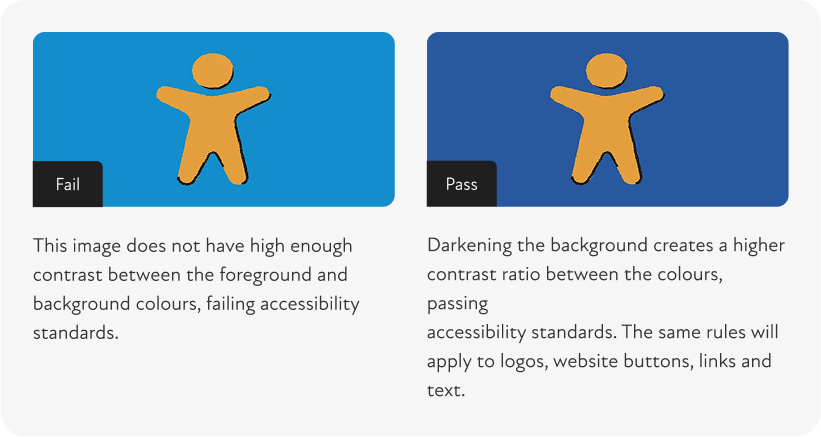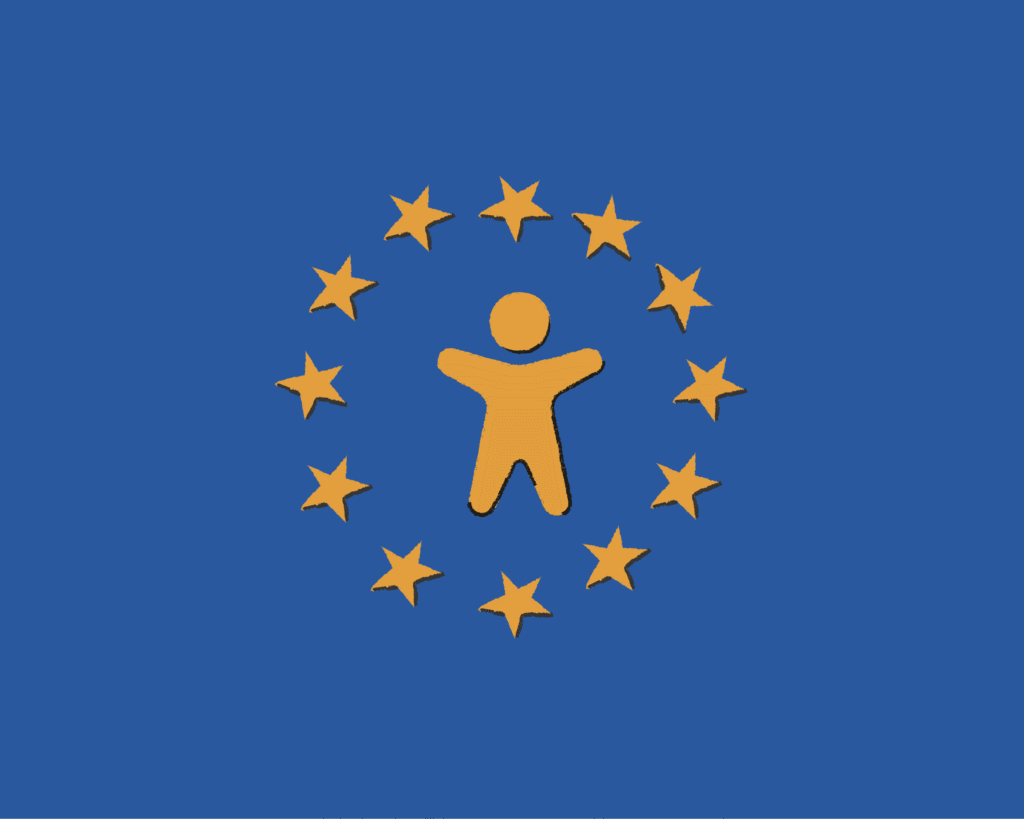Dom Huxley, eighteen73’s UX and Technical Development Lead outlines the implications for a new piece of legislation, including how your business might be impacted and the positive steps you can take to offer an inclusive digital experience.
Imagine being unable to access online banking, book travel, or even read essential product information – this is the reality for millions of people due to inaccessible digital design. The European Accessibility Act (EAA) aims to right those wrongs.
In a nutshell
The European Accessibility Act (EEA) comes into force in all EU member states on 28th June 2025. It aims to ensure equal access to digital products and services for any customer within the European Union. If you’re trading with the EU or inviting users in the EU to look at your website, then accessible design needs to be a top priority.
The EAA aims to ensure that digital products and services are Perceivable, Operable, Understandable, and Robust. These are the principles that tend to form the foundation of digital accessibility.
With digital accessibility enshrined in law, the EEA will enable EU member states to enforce compliance through substantial fines – and in Ireland, even jail time.
Does it affect you?
Digital accessibility affects us all, but the EEA is concerned with organisations that fit the following criteria:
- Anyone providing goods or services to consumers, public or private bodies in the European Union
- Any organisations, public or private sector, that have either 10+ employees or revenue in excess of €2million
Although primarily focused on digital accessibility, the EEA also legislates for a degree of physical accessibility in cases where it is essential for making use of digital services. This extends to ATMs, ticket machines, check-in and service kiosks, card-readers and e-readers.
How does it help?
It’s important we design inclusively to respond to the full range of needs. We expect it in the physical world – on the high street and in the workplace, so we should expect it online too.
The EEA aims to ensure equal access to products and services by providing a simple and consistent set of standards for business to adopt. Ultimately this will improve the lives of many disabled and older people within the EU and related communities. More people will be able to use and access essential everyday services and items.
In terms of business benefit, better accessibility is not just about compliance. It improves Search Engine Optimisation, boosts conversion rates, and opens up access to a much larger customer base. With 20–25% of people living with a disability, the spending power of disabled consumers is significant. In the UK alone, the “Purple Pound” is estimated at £274 billion.
By consolidating standards across the EU, the EEA will make it easier for businesses trading with member states to navigate individual national regulations and compete in EU markets.
What are the risks?
With emerging legislation such as the EEA (2025), digital accessibility is clearly now identified as a basic aspect of corporate responsibility.
As a result, nations will have the power to enforce penalties as high as €1,000,0000. Penalties will vary country by country, but the EEA stipulates they must be “effective, proportionate and dissuasive”. Ramifications for businesses doing significant trade in the EU could therefore be substantial.
Some countries will impose ongoing daily penalties. In Ireland, offenders could face imprisonment of up to 18 months.
Fundamentally, there is a human cost and an ethical responsibility – does your organisation want to be part of a more inclusive society or not? The price for non-compliance will be reputational damage and consumer and employee dissatisfaction.
The EAA is designed to be essential for market access to the EU. Non-compliance won’t just be a legal issue, it could become a serious competitive disadvantage.
What can you do?
Ensuring digital accessibility is about creating a seamless experience for all users. There are simple steps that you can take to help assess, improve and maintain accessible digital services in order to work towards EEA compliance.
Working to comply with WCAG 2.1 AA is a strong step in the right direction. The A11y Project has a checklist you can refer to as an overview, but in essence, you need to make sure your digital channels consider:
- Accessible multimedia
- Keyboard accessibility
- Sufficient contrast
- Accessible forms
- Limited use of moving, flashing or blinking content
- Consistent navigation
- Removal of time-limited content
- Clear channels to allow user and customer feedback
- Mobile usability

Furthermore, before making improvements, you need to understand where you stand. Several free tools can help businesses quickly identify accessibility issues:
- WAVE: This will highlight errors such as missing alt text, low contrast, and structural issues;
- Google Lighthouse: Evaluates accessibility, performance, and best practices for websites;
- axe DevTools: A browser extension that helps detect WCAG violations;
- Screen Readers (e.g. NVDA, VoiceOver): Simulating how visually impaired users experience your site will reveal usability barriers.
For EEA compliance, you will also be expected to provide alternative formats for user guides, contracts, and support documentation.
And finally…
Remember, this is a progressive step to ensuring a more considerate society and many, many people are affected by digital inaccessibility. It is a basic ethical obligation to do more.
At eighteen73 our work ensures digital services are compliant, user-friendly and future-proof. Our team will help audit, implement, and maintain accessibility best practices.
Get in touch today to find out more.




